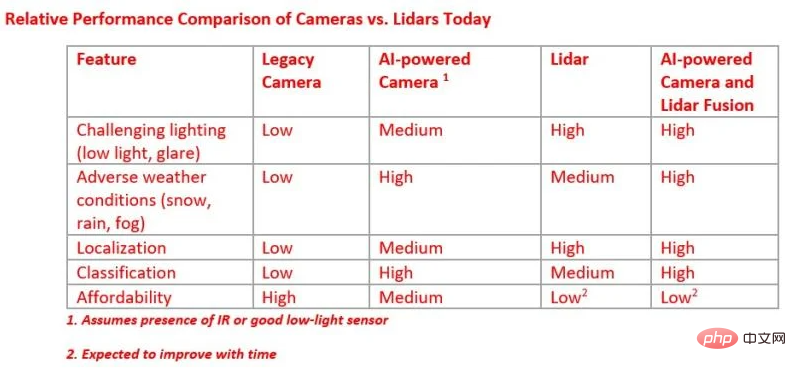Home >Technology peripherals >AI >Why AI cameras and LiDAR are important for smart roads
Why AI cameras and LiDAR are important for smart roads
- 王林forward
- 2023-04-09 12:51:101022browse

The Consumer Electronics Show in January this year triggered a new wave of self-driving cars entering the automotive market in the next few years. Much of the attention has been focused on the technology of these vehicles. However. Technology embedded in road infrastructure is also prompting more discussions between service providers and municipalities.
With advances in artificial intelligence and 5G
, smart road infrastructure technology is expected to be added to many different roads, bridges and other transportation systems in the United States in hopes of improving real-time traffic analysis and tackle the most challenging road safety and traffic management issues. One of the technologies at the center of this discussion is the current use of AI-enhanced cameras and the future promise of LiDAR technology.
Artificial intelligence will enhance camera sensing performance
Today, hundreds of thousands of traffic cameras are deployed in the United States alone, and even millions if CCTV cameras are taken into account. They are mainly used for road monitoring and basic traffic management applications (such as cycle simulation). However, bringing the latest advances in AI to these assets can immediately improve basic application performance and unlock more advanced software applications and use cases.
Artificial intelligence and machine learning provide superior sensing performance compared to traditional computer vision technology in conventional cameras. They enable more robust, flexible and accurate detection, tracking and classification of all road users through algorithms that automatically adapt to various lighting and weather conditions. Additionally, they have predictive capabilities to better simulate road user movements and behavior and improve road safety. Municipal agencies can immediately benefit from AI-enhanced cameras with applications including road conflict detection and analysis, pedestrian crossing prediction, and infrastructure sensing for AV deployment.
LiDAR technology cannot completely replace cameras. LiDAR can provide complementary and sometimes overlapping value with cameras; however, there are still some safety-critical edge cases where LiDAR technology performs poorly (including heavy rain and snow) and cameras Has been proven to be better. Additionally, large-scale deployment of today’s lidar technology remains expensive due to high unit price and limited field of view. For example, deploying multiple LiDAR units at an intersection would require a huge investment, whereas a 360-degree AI camera might be a more cost-effective solution.
For many in the budget-conscious community, AI-enhanced cameras remain today’s proven go-to technology. Over time, as the cost of LiDAR technology decreases, communities should evaluate augmenting their infrastructure with such sensors.
Ultimately, sensor fusion will deliver strong results
When the cost of LiDAR technology finally reaches the expected reductions, it will be seen as a powerful and viable addition to the AI-augmented cameras installed today of supplement. Similar to autonomous vehicles, sensor fusion will become the preferred method for smart infrastructure solutions and enable cities to maximize the benefits of both technologies. (Sensor fusion is the ability to combine data inputs from multiple LiDAR, cameras, radar, CCTV and other sources into a single environment model or image.)

Today The use of cost-effective and performant AI-powered cameras, coupled with the huge potential of LiDAR in the coming years, can help communities and municipalities achieve a win-win situation today and tomorrow.
Ultimately, the goal is to improve overall traffic flow and reduce vehicle collisions and fatalities, but the technology and implementation strategy must be right. The technology that monitors our roads also needs to change, so consider AI-powered cameras today and hopefully LiDAR tomorrow.
The above is the detailed content of Why AI cameras and LiDAR are important for smart roads. For more information, please follow other related articles on the PHP Chinese website!
Related articles
See more- Technology trends to watch in 2023
- How Artificial Intelligence is Bringing New Everyday Work to Data Center Teams
- Can artificial intelligence or automation solve the problem of low energy efficiency in buildings?
- OpenAI co-founder interviewed by Huang Renxun: GPT-4's reasoning capabilities have not yet reached expectations
- Microsoft's Bing surpasses Google in search traffic thanks to OpenAI technology

